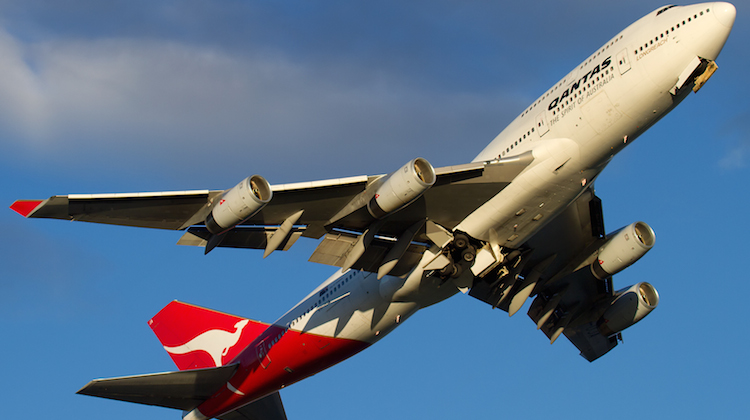
Qantas has dotted every ‘i’ and crossed every ‘t’ ahead of the retirement flight for its first Boeing 747-400, VH-OJA. All that is left to do now is hope for good weather on Sunday.
Qantas is gifting VH-OJA City of Canberra, which flew non-stop from London to Sydney for its delivery flight in 1989, to HARS (the Historical Aircraft Restoration Society) to go on display at Illawarra Regional Airport near Wollongong.
The Qantas pilots at the controls for VH-OJA’s retirement flight, which has been given the special flight number QF7474, have spent 25 hours in the simulator preparing for Sunday’s landing at the aircraft’s new home.
Qantas Captain Greg Matthews will be the pilot in command for the delivery flight and he, along with Qantas head of flying operations Captain Mike Galvin and Qantas executive manager for corporate affairs and communications Andrew McGinnes hosted a briefing at the airline’s Mascot headquarters on Thursday for reporters, bloggers, industry representatives and aviation enthusiasts.
The trio told the assembled gathering the aircraft would land at Illawarra Airport from the north, touching down on Runway 16, which measures a little over 1,800 metres in length.
Qantas has received approval from Boeing to reduce the tyre pressure from 208 psi normally to 120 psi to reduce the impact on the runway, and in fact the 16 wheels on the main landing gear would exert less pressure on the runway than HARS’s Super Constellation.
Captain Matthews said there was plenty of runway length for VH-OJA to land and the flightcrew were not planning to use reverse thrust, just idle thrust.
This was due, in part, to the runway’s 30-metre width, meaning the outer pair of engines on the 747 would be over grass, leading to the potential of stones or other debris being sucked into the engines.
Three of the engines still had “commercial value” and were due to be removed off the aircraft and returned to Qantas to be used as spares for its fleet of 11 remaining 747s. One engine will remain with the aircraft.
The flightcrew will fly a visual approach into the airport where CASA has declared temporary restricted airspace within an eight nautical mile radius up to a height of 4,500 feet.

Sundays were usually a busy time at the airport, with plenty of light aircraft, hot air balloons and other assorted general aviation movements at that time.
CASA also sat in with the pilots during the flight simulator sessions and has given its tick of approval to the flight proceeding.
VH-OJA is expected to take off for Sunday’s delivery flight at 201,000kg, far lower than the 747-400’s maximum takeoff weight of 397,200kg. The reduced weight also means the approach speed of VH-OJA prior to landing would be lower than usual at 132kt, compared with 180kt normally.
The galley carts have been removed from the cabin, and all potable water taken off the aircraft.
The delivery flight is subject to weather conditions and will not proceed if there is a northerly wind, a crosswind of greater than 10 knots or if clouds prevent a visual approach.
Moreover, the landing will not be attempted and the aircraft will return to Sydney should conditions change after takeoff.
VH-OJA was expected to touch down at 0747 local time.











